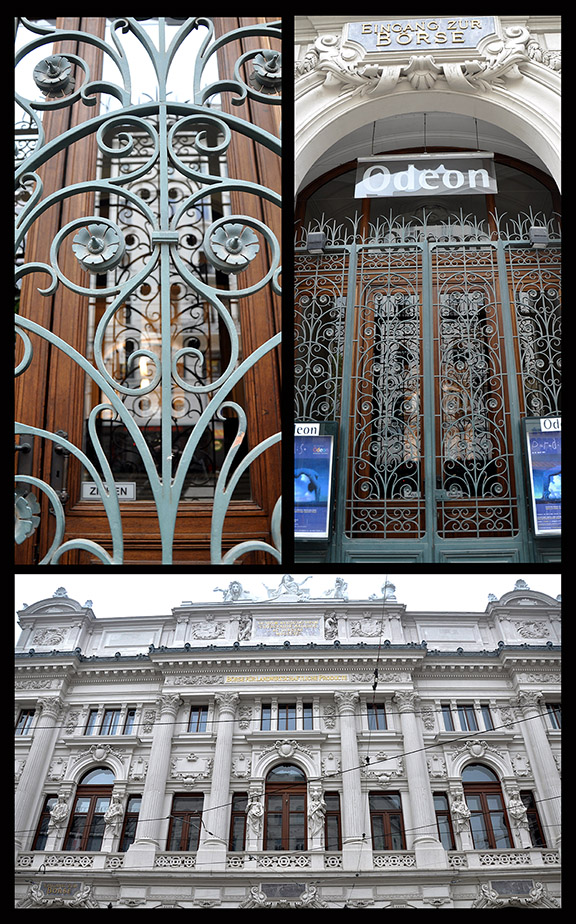Events
Forums
Community forums will take place in organizational settings representing the various victim groups of National Socialism. The project manager and a guest historian, will develop community meetings to talk about the 38 memory zones, soliciting input from community members regarding which sites best represent their group. This information will be brought back to the research team, academic board and project president and factored into the final selection of sites. In this manner, dialogue will directly impact the development of the 38 memory zones.
![8. walking panel[72]](http://theviennaproject.org/wp-content/uploads/2011/04/8.-walking-panel72-1024x614.jpg)
The sites will represent the culture of sadism, indifference, and fear that permeated the streets of Vienna, starting in 1938. Capturing the climate of violation and betrayal under National Socialism, the memory zones will be transformed through dialogue and performance, to embody new ideas about civic responsibility and social justice.
Teaching Seminar I
The Teaching Seminar I will provide teachers with a means of understanding the framework of The Vienna Project and its relationship to Holocaust education in the Austrian school system. The Teaching Seminar will also serve as a means of recruiting teachers and their students to participate in the digitized audio interview program. Audio interview instruction and program development will take place in the seminar. READ MORE…
Opening Ceremonies: Odeon Theatre and at Salztorbrücke along the Canal
The Vienna Project will open on October 23, 2013 at the historic Odeon Theater in the Leopoldstadt District, Vienna’s most diverse district. Built by a Jewish architect, Karl König in 1890, this ornamental building once housed Austria’s International Corn Market.
Opening events will include chamber music and poetry readings by celebrated Austrian poets. Walking to the nearby canal, the public will then witness a dramatic display of video projections, featuring the project axiom “What happens when we forget to remember.”
![9. bridge[72]](http://theviennaproject.org/wp-content/uploads/2011/04/9.-bridge72-1024x767.jpg)
Projected onto the Salztorbrücke, under the bridge, and onto the water running below the bridge, the text will read as a “water poem,” interlaced with a second phrase “to not forget as we remember.” Using video projections, the text will read as rays of light, floating on the surface of the water while descending into the depths below. Composed as a couplet in ten languages–Deutsch, Yiddish, Romani, Slovenian, Polish, Russian, Serbo-Croatian/Bosnian, Turkish, Hebrew and English–the words will mingle with the current, rippling downstream as an ephemeral event.
Closing Event: Flak Tower projections
Beginning on May 6th 2014 and running for three days, a moving image containing the thousands of names of multiple victims and dissidents groups, murdered between 1938-1945 and retrieved from five databases, will be projected onto the façade of the Flak-Türme VII-G Tower in the Augarten, located in the second district. The size of this colossal tower made of concrete and steel, provides an ideal surface to project the names of 100,000+ victims of the Nazi regime. The Flak-Türme Tower also conveys a conceptual message.
![10. manicured[72]](http://theviennaproject.org/wp-content/uploads/2011/04/10.-manicured72.jpg)
Originally designed as anti-aircraft “blockhouse” towers, these massive structures were constructed by forced laborers between 1942-1944 to protect cities and civilians in Berlin, Hamburg and Vienna from allied bombing. Regarded as ghostly relics, the six indestructible towers that remain standing in Vienna symbolize the defeat of the German army and the end of an unprecedented reign of terror across Europe. Voided space lacking any social or utilitarian function, the ultimate “Anti-War Memorial,” the Flak-Türme VII-G Tower will be repurposed through image and sound to commemorate the thousands of victims and dissident groups murdered under National Socialism.

Using a variety of artistic strategies, the names will be sequenced to retain their distinctive groupings while migrating across the surface of the tower to read as a collective stain of enormous proportion. Organized by group affiliation into a visually stunning and constantly changing configuration, the time-based nature of the projections will require that audiences join together in a nighttime vigil of remembrance.
A sound installation will be activated in the park during the day, creating a different sensory encounter with memory. Sound by day, image by night, the park will be teeming with memory, enveloping visitors as they wander along the paths of The Augarten.
Teaching Seminar II
A second Teaching Seminar will be developed in partnership with the Multicultural Center Prague for June 2014 in Vienna. This seminar will be devoted to reviewing and evaluating the outcome of two parallel memorial projects, one in Prague and the other in Vienna. Presenting documentary footage of the The Vienna Project, the seminar will consider the effectiveness of a variety of programs, such as performance art, guided tours, interactive websites, and pubic forums, used to stimulate fresh conversations about historical data in a “post-memorial” era. Attention will be given to experimental approaches and methodologies used to invigorate Holocaust curricula with a changing demographic.
Academic Symposium
Working in partnership with the Vienna Wiesenthal Institute for Holocaust Studies and the Wien Museum, an international academic symposium will be planned for November 2014. Positioned to follow the memorial project, the day-long symposium will address design issues related to naming memorials following genocide. Special attention will be directed to The Vienna Project and the culture of naming. “The Culture and Politics of Naming and Identity: Public Art, Public Memory and Participation,” will take a closer look at naming memorials, the impulse to name the dead, issues of individual and group identities, and different cultural traditions concerning memorialization.





Comments on this entry are closed.